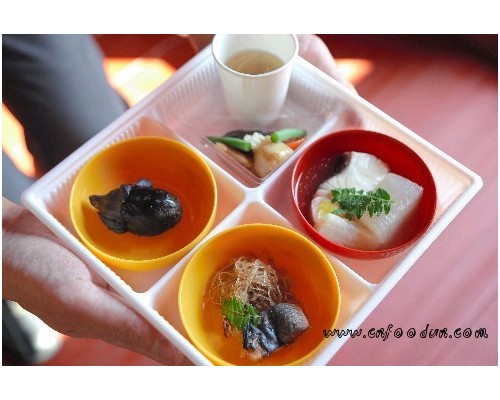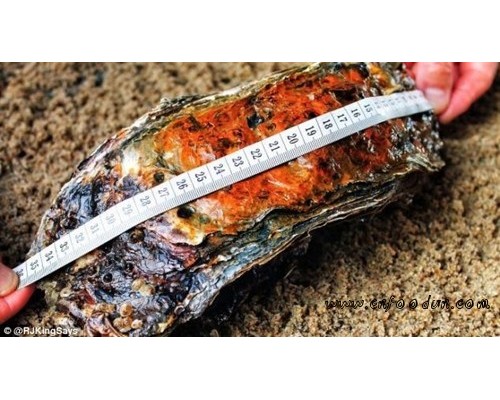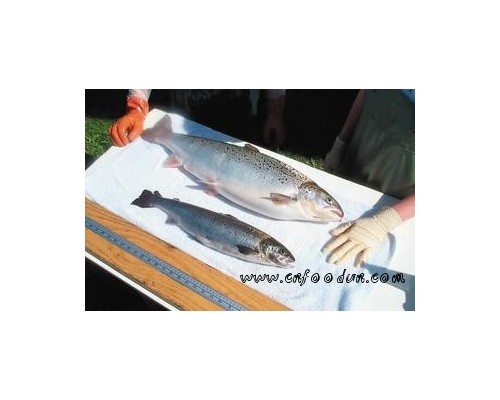食品伙伴网报道:据美国营养成分网站报道,最新的研究表明天然抗氧化肽可用于防治功能性食品中的ω- 3脂肪酸氧化。通过添加ω- 3脂肪酸丰富的鱼油到食品中代替原有的脂肪,从而使人们的膳食更加健康。但是随之而来的问题就是食物中被添加的ω- 3脂肪酸容易被氧化,发生酸败,从而产生异味。

研究发现,与牛奶相比,添加到酸奶中的ω- 3脂肪酸更加不容易被氧化。这一研究结论刊登在食品化学杂志上。该研究测定了牛奶发酵成酸奶的过程中所形成的蛋白质碎片的抗氧化能力。通过测定DHHT自由基清除活性、二价铁离子螯合活性以及还原力等手段,测定了不同大小(3kDa,10kDa,30 kDa)的酸奶蛋白样品的抗氧化能力。研究发现,与大片段的肽段相比,小片段的肽段(<10kDa)具有更强的抗氧化能力。这项研究的结果显示,氧化稳定性较高的酸奶,可能是因为奶中的乳酸菌发酵释放抗氧化肽,而这些肽可以用来稳定食品中丰富的鱼油。
研究者称:由于抗氧化活性肽的取决于氨基酸组成、序列和结构,我们无法解释观测到结果的确切机制。
本报道由食品伙伴网编译整理,仅供食品行业相关人士参考,详细内容以国外原文报道为准。
原文报道:
Yogurt proteins could stabilize omega-3 enrichment
By Nathan Gray, 29-Jul-2010
Related topics: Omega-3, Research, Antioxidants, carotenoids, Nutritional lipids and oils, Proteins, peptides, amino acids
New research suggests that naturally occurring antioxidant peptides could be used to prevent oxidation of omega-3 in functional foods. Adding omega-3 rich fish oils into functional food products by substituting it for some of the original fat in foods could be a way to increase the amount of long chain omega-3 in our diet. However the problems involved with incorporating fish-oils in food products are well established. The main problem with introducing fish oils such as omega-3 to into food products is that it brings oxidative instability and can lead to potential ‘off-flavor’ formation.
Research that assessed the feasibility of such enrichment in dairy products found that yogurt with added omega-3 fatty acids are less susceptible to oxidation then milk containing the same amount of omega-3.
The new study, reported in the journal Food Chemistry, aimed to investigate the reason for such big differences in oxidative stability, with differences suggested to be due to the different protein composition of milk and yogurt.
The research measured the antioxidant properties of protein fragments formed when milk is fermented into yogurt. Samples of yogurt proteins of various sizes (3kDa, 10kDa, and 30 kDa), were tested for antioxidant activity by investigating DPPH radical-scavenging activity, Fe2+ iron-chelating activity, and reducing power.
The study observed that the smaller fraction peptides (<10kDa) were more effective antioxidants than larger fractions, especially in terms of Fe2+-chelanting activity and reducing power – of which Fe has previously been suggested to be important catalyst in fish-oil oxidation. The smaller proteins with high antioxidant properties were then tested in omega-3 enriched milk which usually has a low oxidative stability, and were found to offer protection against oxidation of fish-oil enrichments. The study’s findings suggest that the higher oxidative stability of yogurt might be due to antioxidant peptides released during the fermentation of milk by lactic acid bacteria, and that these peptides could be used to offer oxidative stability to fish-oil enriched food products.
Further work is now needed to identify exactly which peptides have the observed benefits on oxidative stability. The researchers wrote: “Since the antioxidant activity of the peptides depends on amino acid compositions, sequence and configuration of peptides, we cannot explain the exact mechanism for the observed findings” Further purification and characterization of these [protein] fractions may offer an explanation for the discrepancies in the active peptides”.
With indications that current diets are highly deficient in omega-3 fatty acids, the greater oxidative stability provided by adding natural antioxidant peptides to an omega-3 enriched functional food could make omega-3 enrichment in foods more straightforward.The study concludes: “These results also demonstrate the applicability of these naturally-occurring antioxidant peptides as an ingredient in foods enriched with fish oils to increase their oxidative stability.”







